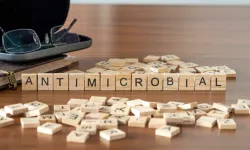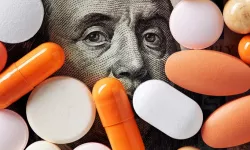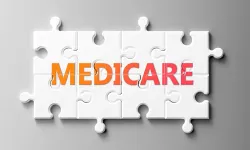Drug Information

PharmEcology® is the exclusive company that can provide your organization with specialized solutions for USP 800 Assessment of Risk requirements and pharmaceutical waste management programs.

Medication Safety is one of those terms that can be woven into anything related to medications. Adverse event from an anticoagulant? Medication safety. Sterile compounding? Medication safety. Regulatory compliance? Medication safety. Medication administration? Medication safety. REMS? Medication Safety. Electronic order sets? Medication safety. The list can go on and on and on and rightfully so since safety plays a role throughout the entire medication use process. While many medication safety officers do juggle one or several of these responsibilities, at the heart of any medication safety program is reducing the risk of medication errors and patient harm. Here are 5 things you need to know NOW about medication safety.
Safety culture makes ALL the difference. Safety culture is one of those weird intangible concepts that is difficult to explain or put your finger on but has such a profound effect on how situations can unfold. I’ve given many lectures on safety culture, and I always like to start by painting a picture of a busy pharmacy and looking at how a scenario could unfold in different safety cultures. In a strong safety culture, an error is caught before leaving the pharmacy and a system fix is later put in place to prevent that error from happening again. In a lower safety culture, an error reaches the patient who subsequently goes into cardiac arrest resulting in an overhead call for a code blue. Again, hard to put your finger on exactly what it is, but has a profound effect. I can go into many technical aspects of safety culture, but I’ll spare you the details. The key takeaway is that it all starts with psychological safety or how comfortable everyone is with speaking up, disagreeing openly, or asking questions without fear of negative repercussions. In a later article, I’ll provide more specific tips on how to build psychological safety at your pharmacy.
Saying (and repeating) “BE MORE CAREFUL!” does NOT make a safer system. Instead, higher leverage strategies are needed to prevent errors. The Institute for Safe Medication Practices has an infographic entitled the ‘hierarchy of effectiveness of risk-reduction strategies’ that displays low, medium, and high-leverage strategies. Low-leverage strategies, such as educational programs and telling someone to “Be more careful!”, focus on human reliability. As humans are fallible and to err is human, we simply cannot educate ourselves to safety. Medium-leverage strategies are a step above and include redundancies and alerts but may need reinforcement and periodic updating. High-leverage strategies, such as forcing functions, computerization, and automation, may take longer to implement, but is most effective because it can eliminate the risk of errors altogether. So, if you find yourself saying “BE MORE CAREFUL!” over and over again, pause, check yourself, and ask ‘What higher leverage strategies can we put in place to prevent this error from happening again?’
Learn from events that happen outside your organization. There is something called normalcy bias when errors occur at outside organizations where people think ‘That won’t happen here.’ But guess what? It can and it will. Don’t rely on solely on reported medication errors at your organization! Look proactively at events that happened at other organizations and learn from them. Identify gaps internally based on the shared event and work to close those gaps before the same error occurs at your organization.
Every healthcare institution needs a dedicated medication safety leader. The American Society for Health-System Pharmacy (ASHP) has a white paper on the need for a dedicated medication safety leader that I highly encourage all pharmacy directors to read. Medication safety simply cannot be another hat one wears as a pharmacy manager or director who is also managing budgets, monitoring financial performance, implementing cost-saving measures, addressing regulatory concerns, maintaining a competent and engaged staff, and more! A medication safety leader sets the medication safety vision, identifies opportunities to improve the medication-use process, and leads efforts and initiatives to prevent medication errors. Advocate for a dedicated medication safety leader at your institution and use patient safety stories to drive home the need.
- You are not alone! I meet a variety of people in medication safety. Those who juggle multiple responsibilities where medications safety is just one of the many balls they need to keep up in the air. Those who have a dedicated role in medication safety but feel like they are carrying the weight of the world on their shoulders. Those who are new to medication safety and don’t know where to start. One thing that I say to everyone in medication safety is ‘You are not alone!’ There are a ton of resources out there (e.g. ASHP Medication Safety Resource Center and the Institute for Safety Medication Practices newsletters and self-assessment tools) that you can and should leverage. You can also connect with others in medication safety via forums such as the Medication Safety Officers Society (MSOS) or ASHP Connect for Medication Safety. I also highly encourage joining state or national professional organizations that have a medication safety group to have a network of other medication safety professionals you can lean on and learn from!

Hospitals and healthcare providers continue to face challenges due to drug shortages. As we know, shortages affect both patient care and treatment protocols. Many life-saving medications have been identified in short supply, posing potential risks to patient outcomes and requiring strategic management and alternatives by healthcare professionals. Hospitals must stay ahead by ensuring the availability of robust strategies to manage these shortages, ensuring that patient care remains uninterrupted and safe.
Here are some actionable strategies and reminders to consider for managing drug shortages effectively.
Strategies for Managing Drug Shortages
Alternative therapies: Identify and validate alternative drugs or therapeutic modalities that can effectively replace the shorted medication without compromising patient care.
Supplier diversification: Work toward diversifying suppliers and manufacturers for critical drugs to reduce the impact of a shortage from a single supplier.
Usage guidelines: Implement guidelines for the use of drugs in short supply, prioritizing patients for whom the medication is most critical.
Stock management: Optimize stock levels by monitoring consumption patterns and adjusting stock levels accordingly to prevent overstocking and understocking.
Collaboration: Engage in collaborative efforts (if possible) with other hospitals and health systems for sharing resources during acute shortages.
Patient communication: Ensure transparent communication with patients regarding drug shortages, potential impact on treatment, and available alternatives.
Long-term Solutions
Advocacy: Participate in advocacy efforts aimed at addressing the root causes of drug shortages through regulatory reforms and industry engagement.
Technology adoption: Utilize technology for better forecasting and managing of drug inventories, including the use of artificial intelligence (AI) and machine learning algorithms.
Education: Keep the healthcare team informed and educated about managing drug shortages, including training on the use of alternative therapies and adjusting dosages.
Some Key Drug Shortages
These are a few of the current drug shortages, focusing on medications that may be critical for patients in the hospital setting. These medications are often used in acute settings, emergency care, or the treatment of serious conditions, making their availability crucial.
Amiodarone injection
Significance: Critical for use in the treatment for serious arrhythmias, such as ventricular tachycardia. Its importance lies in its ability to stabilize heart rhythms.
Ciprofloxacin injection
Significance: As a broad-spectrum antibiotic, ciprofloxacin injection plays a critical role in treating bacterial infections. It is especially valuable in treating infections in patients who cannot tolerate or absorb oral antibiotics.
Methotrexate injection
Significance: An essential chemotherapeutic agent and immunosuppressant used to treat various cancers. Its injectable form is crucial for cases requiring high bioavailability and rapid onset of action.
Midazolam injection
Significance: A benzodiazepine used for sedation, anxiolysis, and amnesia before medical procedures and in the ICU for sedating patients.
Nitroglycerin injection
Significance: Nitroglycerin is a critical medication used primarily in the management of acute episodes of angina pectoris and the treatment of heart failure associated with acute myocardial infarction. Its rapid vasodilatory effects can relieve chest pain by increasing blood flow to the myocardium and decreasing the heart’s oxygen demand.
Somatropin injection
Significance: A synthetic growth hormone, somatropin is used to treat growth hormone deficiency in children and adults. Its role is crucial in promoting normal growth and development in children.
For a detailed and up-to-date list of all current drug shortages, healthcare professionals should consult ASHP and FDA drug shortage lists directly. These resources offer comprehensive information on each shortage, including reasons for the shortage, available products, and estimated resupply dates, all of which are crucial for effective shortage management and patient care planning.
Drug shortages pose significant challenges to healthcare teams, requiring a proactive and strategic approach to ensure uninterrupted patient care. By staying informed about the current shortages and utilizing a combination of short-term management strategies and long-term solutions, hospital pharmacies can navigate these challenges more effectively.

Lifepoint Health is a leading healthcare provider that serves patients, clinicians, communities, and partner organizations across the healthcare continuum. The company has a growing diversified healthcare delivery network comprised of 60 community hospital campuses, more than 60 rehabilitation and behavioral health hospitals, and 250 additional sites of care, including managed acute rehabilitation units, outpatient centers, and post-acute care facilities.
Historically, the process for managing expired drug waste was not clear for this complex organization, and corporate oversight proved inefficient in providing guidance or standardization across the enterprise. Poor data visibility from the reverse distributor was the primary hurdle to oversight. Lifepoint Health worked with its reverse distributor to improve data analytics tools to help improve outcomes for its 60 acute care community-based hospitals.
With potentially millions of dollars in annual expired waste costs, enterprise-wide level oversight of expired drug waste is necessary and is dependent on clear visibility into actual expired drug volume and cost data to effect change.
Methods
The first step was to improve the expired drug waste data collection process and data visibility. Lifepoint’s Pharmacy Operations lead worked with the reverse distributor’s team to develop a quarterly report worksheet that provided accurate detailed expired waste data per facility per quarter. The report consisted of the following information:
- Division-level aggregated data
- Facility-level totals and line-item data
- Creditworthy Return Benchmarking Data:
- National
- Corporate
- Division
- Facility
- Non-creditworthy expired returns Reason Codes
- Hazardous waste codes
Secondly, a PowerPoint Summary Report was developed for specific facilities. Due to the considerable number of hospitals, inclusion criteria were developed to determine which hospitals would receive a quarterly PowerPoint Summary Report and which would not.
Summary Reports are described below:
- PowerPoint Content
- Creditworthy returns, non-creditworthy returns, and total expired drug waste cost per facility
- Total expired drug line items and % of Division Total expired waste line items
- Non-creditworthy return totals per reason code
- RCRA U and P listed HD Returns (if applicable)
- Raw return data for non-creditworthy non-controlled drugs for top 150–200-line items.
- Actions to decrease expired drug waste, guidance on what to include in reverse distributor returns and what not to return.
The PowerPoint template was completed with data from the reverse distributor’s quarterly report for each eligible hospital and emailed to the Director of Pharmacy and Division Director of Pharmacy Operations with requests to review the report for opportunities for improvement regarding expired drug waste management.
Results
The reports and recommendations provided to the Directors of Pharmacy resulted in a 4% decrease in expired drug waste volumes, a 9.1% increase in creditworthy returns, and a 16.4% decrease in cost reduction from 2020-2022.
Conclusion
The creation of a reverse distributor quarterly detailed Expired Drug Review Report was key to central oversight of expired drug waste for Lifepoint Health’s acute care hospitals. The reports allowed for timely analytics and process improvement recommendations.

Antimicrobial stewardship programs (ASPs) are critical tools for promoting the safe and effective use of antimicrobial drugs. ASPs are not developed directly for reducing healthcare costs, but good stewardship leads to more cost-effective care. This includes impacting drug expenditures as well as other costs.
Pharmacy expertise is one of the CDC Core Elements of ASPs in hospitals. Regulatory bodies such as The Joint Commission and The Centers for Medicaid and Medicare Services endorse the critical role of pharmacy expertise in ASPs. However, activities of antimicrobial stewardship pharmacists can vary significantly between organizations. Combine this with a general lack of understanding of what ASP pharmacists do and there is no surprise a gap can often be observed between what pharmacy team members think ASP pharmacists should do versus what ASP pharmacists actually can do. Further complicating the issue, variability is a major commonality across ASPs, since each organization has its own specific patient populations, epidemiology, drug use patterns, physical resources, medical services, staff strengths/weaknesses, technology, administrative structure, and organizational priorities.
Even though ASPs are complex, there are many instances where common ground can be observed across sites. For example, programs often need to focus resources on appropriate management of urinary tract infections, respiratory tract infections, and skin and soft tissue infections since they are all common infectious processes. As programs aim to address high-priority items there are also financial targets that may be at play for the department or organization. For the antimicrobial stewardship pharmacist this commonly involves engaging in measures to control drug-related costs while ensuring optimal care.
Each year the American Journal of Health-System Pharmacy publishes an article about national trends in prescription drug expenditures, including projections for the next year. This is an excellent resource for identifying which drugs should be on your radar for high economic impact potential. In the July 2023 edition of the publication which displays 2022 data with predictions for 2023, HIV medication bictegravir/ emtricitabine/ tenofovir (Biktarvy) ranked 8 in the top 25 drugs by expenditures overall, pneumococcal conjugate vaccine ranked 17 in the top 25 drug expenditures in clinics, and remdesivir (Veklury) was the top drug expenditure in hospitals (for the second year running). By drug category, antivirals ranked third, systemic antiinfectives ranked eighth, and antifungal agents ranked twenty-fourth. It’s likely 2024 will have some of the same high-cost drugs as 2023.
In light of the above information, it may be helpful to discuss antimicrobial drug costs in the context of what antimicrobial stewardship pharmacists can do. That will be the focus of this article. Here I will discuss my top 5 high-cost antimicrobials for hospitals to watch in 2024 and how your antimicrobial stewardship pharmacist can have an impact. Please note that cost-savings/avoidance opportunities can vary by practice setting, some drugs will be discussed by category, and this is by no means an all-inclusive list of high-cost antimicrobials to look out for in 2024.
1. COVID-19 medications: Remdesivir (Veklury®) and nirmatrelvir/ritonavir (Paxlovid®)
Although the pandemic is over, COVID-19 is here to stay. With the musical chairs of prevalent SARS-CoV-2 variants and different types of immunity in the community, the rate of severe/critical COVID-19 has thankfully become less frequent while mild-moderate COVID-19 has become relatively more common. There is of course no way to predict the future, but it is highly likely COVID-19 will come in waves as respiratory viruses tend to do each year.
For severe/critical COVID-19, intravenous remdesivir will most likely continue to be a mainstay of therapy. Exceeding $550 per vial, a 5 day course of remdesivir is over $3,300. ASP pharmacists can impact remdesivir use practices by implementing and overseeing criteria for use which are enforced by electronic medical systems and/or pharmacy staff verifying orders. Activities can include ensuring reasonable use as well as avoiding excessively long durations of treatment or delay to discharge. ASP pharmacists can be a critical resource for bridging prescriber awareness to local guidelines, based upon institutional data and trends.
For mild-moderate COVID-19, commercially available oral nirmatrelvir/ ritonavir is the preferred option (except when issues such as drug-drug interactions are a problem). At just under $1500 for a 5 day course, nirmatrelvir/ ritonavir is less expensive than remdesivir, but it is still high cost compared to most antimicrobial drugs on the market. ASP pharmacists can help promote using nirmatrelvir/ ritonavir over remdesivir when both are an option for a hospitalized patient, which supports better treatment and reduced expenditures. Monitoring data, engaging prescriber stakeholders, and providing targeted education may serve to promote optimal use of nirmatrelvir/ ritonavir.
Molnupiravir (Lagevrio®) approved under an Emergency Use Authorization is another COVID-19 medication to be aware of, but it’s much less likely to be used in the hospital than remdesivir or nirmatrelvir/ ritonavir, since it is third-line for mild-moderate COVID-19 and clinical data supporting it’s efficacy are much less favorable as compared to nirmatrelvir/ ritonavir.
2. Beta-Lactams for drug-resistant gram-negative bacteria
Some of the highest-cost antibacterial drugs fall into this category, and include:
- Sulbactam-durlobactam (Xacduro®)
- Meropenem-vaborbactam (Vabomere®)
- Imipenem-cilastatin-relebactam (Recarbrio®)
- Ceftolozane-tazobactam (Zerbaxa®)
- Ceftazidime-avibactam (Avycaz®)
- Cefepime-enmetazobactam (Exblifep®, not priced yet but expected to be expensive)
- Cefiderocol (Fetroja®)
Most of these antibiotics fall into the $750-$1300 per day range, but it does depend on renal function, dosing, and contracting. The mix of use on these antibiotics will vary depending on local epidemiology and prescriber preferences. Caring for immunocompromised patients or those from a local nursing facility may be a big driver of drug use for multi-drug resistant organisms, which is where these antibiotics are most commonly employed.
ASP pharmacists and infectious diseases physicians should arguably be involved with every case in which one of these antibiotics is prescribed. ASP pharmacists should work with local stakeholders to steer reasonable selection for initiation, streamlining after 48-72 hours, safety monitoring, and local protocol development with formulary decisions. In addition, ASP pharmacists can work with pharmacy buyers and patient assistance program contacts to control inventories, ensuring the antibiotics that are expected to be needed are available, but while also ensuring excessive stock is avoided and vial replacement programs are leveraged.
3. Intravenous vancomycin
In most hospitals intravenous vancomycin remains the mainstay for empiric treatment of severe infections suspected to involve gram-positive bacteria such as methicillin-resistant Staphylococcus aureus (MRSA). While vancomycin drug acquisition costs are not near what is seen with the newer beta-lactam/ beta-lactamase inhibitors, the whole price of vancomycin is considerable and may even contribute to longer than necessary lengths of stay. Vancomycin takes up a lot of time for pharmacists, nurses, and labs. Using it smarter or avoiding it all together can yield economic benefits which impact multiple departments and reduce the risk for acute kidney injury.
ASP pharmacists can help promote use of vancomycin alternatives, de-escalation, and discharge facilitation. There are a long list of ways ASP pharmacists can engage with this, which includes but is not limited to:
- Engaging lab on workflows to leverage MRSA nares PCR to de-escalate therapy
- Working with emergency department prescribers to selectively avoid unnecessary initiations for indications such as non-purulent skin infection or urosepsis
- Promoting oral antibiotics (including now inexpensive oral linezolid) to help facilitate discharge
- Early switch to daptomycin for discharge or in patients at high risk for acute kidney injury
- Employing a vancomycin monitor to engage stakeholders in improving practices
- Teaching pharmacy staff how to individualize vancomycin care to optimize workflows which reduce burdens on pharmacists, nurses, and lab staff
A programmatic approach to optimizing vancomycin practices is recommended, rather than attempting to assign the ASP pharmacist to serve as the daily front-line vancomycin dosing and monitoring point-person.
4. Vaccines
Use of vaccinations within the hospital are impacted by patient populations, regulatory requirements, and organizational priorities. Vaccines for influenza, pneumococcus, tetanus, diptheria, hepatitis B, and rabies (including rabies immune globulin) may be of particular note due to volume of use and acquisition cost. Vaccines such as those for RSV, varicella, and SARS-CoV-2 may be less relevant to the hospital setting if more encouraged for outpatient use, but may also be relevant in the hospital. Hospitals should consider their individual historical and expected vaccine use.
ASP pharmacists can assist with developing as well as evolving standardized processes for patient identification and delivery of vaccinations, working with medical, nursing, informatics, and other staff. ASP pharmacists may also lead medication use evaluations while overseeing pharmacy learners (e.g., student interns, residents), which support identifying opportunities to enhance local practices.
Vaccine-related work is not something an ASP pharmacist needs to be deeply engaged in, but they should be involved in the programmatic monitoring of routine practices and engagement for workflow improvements. ASP pharmacists may also be good team players for vaccine inventory control, especially when shortages are expected (e.g., the tetanus vaccine supply issue of 2024).
5. HIV medications
Bictegravir/ emtricitabine/ tenofovir (Biktarvy®) costs around $140 per pill. It is one of the most important HIV medications today as a well-tolerated single pill regimen recommended by HIV.gov guidelines. Other guideline-recommended antiretrovirals such as rilpivirine (Edurant®), and emtricitabine/ tenofovir alafenamide (Descovy®) also carry significant acquisition costs at approximately $50, $75 per pill, respectively.
ASP pharmacists can assist with developing programs focused on antiretroviral stewardship and formulary management. They can also support inventory control measures, which includes consideration for working with some medications that have short-date expirations after opening. Since many hospitals do not deal with a high volume of patients with HIV, ASP pharmacists can serve as a critical resource to ensure complete regimens, avoiding missed doses, and proper monitoring.
Closing Comments
Institutions can choose to employ their ASP pharmacist as programmatic workflow coordinators, front-line infectious diseases clinical pharmacists, or a mix of the two. How ASP pharmacists are empowered has a great impact on their ability to mitigate costs related to antimicrobial agents such as those discussed here. There can be a great benefit to having ASP pharmacists engaged in pharmacy operations (including inventory control), clinical pharmacy workflow management (including staff interventions), and front-line services (including guiding the use of high-cost beta-lactams).
Several other items of interest not discussed here may include antifungal drugs (e.g., posaconazole [Noxafil®], isavuconazole [Cresemba®]), C. difficile therapies for treatment (e.g., fidaxomicin [Fidaxomicin®]) or prophylaxis (e.g., Vowst®, Rebyota®), and long-acting agents primed for outpatient infusion (e.g., dalbavancin [Dalvance®], oritavancin [Orbactiv, Kimyrsa], rezafungin [Rezzayo®]).
Find Timothy Gauthier, Pharm.D, BCPS, BCIDP as @IDstewardship on X and Instagram.
The views and opinions expressed in this article are those of the author and do not necessarily reflect the policy or position of any previous, current, or potential future employer.

Drug shortages have existed for many decades but not to the extreme that they are today. The pandemic (COVID) and how we treated patients, highlighted the extreme vulnerability of the whole drug supply chain in the United States, especially for generic injectable drugs, which are some of the most frequently used drugs in a hospital setting of patient care, from neuromuscular blockers, anti-infectives and oncology drugs. We rely on some of the cheapest drugs and we count on them to be available, to provide patient care for various diseases and indications and to support patient care service lines, such as oncology and pediatrics.
We need to remember, that the generic drugs that are in short supply, are classified as “small molecule drugs” and not “branded drugs or biosimilars” and some, maybe generic for 25 years or more. Branded Drug Companies own the API source/supply for their small molecule drugs, if they have the patent/NDA. Generic drug companies don’t have medical science liaisons (MSLs) and normally, don’t do any research to expand the FDA approved indication of a drug or develop a different vial size, when they decide to manufacture the generic (this requires a separate ANDA that can take up to 2 years). Generic Drug Companies file for an ANDA (Abbreviated New Drug Application) with the FDA and have their own professional organization, the Generic Pharmaceutical Association, representing them in Washington DC and with the FDA.
As we enter 2024, there are still no solutions that have been implemented policy wise, by the FDA and legislatively, to address the Drug Shortage issue, and the same questions. There have been many meetings and hearings in Washington DC being held with the FDA and Committees, such as Energy and Commerce, with representatives from many different professional organizations, clinicians who treat patients, and even patients and their families, impacted by drug shortages, but still no actions, policies, or legislation being presented for review and approval, to solve the drug shortage crisis. There are discussions about the role of the FDA in the approval process of generic drugs, as well as the role of each generic manufacturer and their professional organization, the Generic Pharmaceutical Association. Drug shortages have been blamed on drug costs being too low for generic drug companies to sustain a profit (race to the bottom), to API shortages and country of API origin, to lack of quality in manufacturing (cGMP), geographical location of manufacturing facilities and exposure to natural disasters, lack of FDA inspections or timely inspections, lack of communication to the FDA on a drug shortage by generic companies and the reason for the drug shortage and the supply chain. Generic drugs are not only purchased and distributed to hospitals, but physician practices (e.g. oncology), 503Bs for compounding (sterile to sterile), private payer infusion companies and various home infusion companies. Sometimes generic drugs end up in what we call the grey market. A more recent concern that has arisen, is the impact of geo-political issues on the global supply chain of drugs.
To develop long-term solutions, there needs to be an understanding of the whole process/steps in developing a generic drug and address each step accordingly with a solution, until it gets to the end user to administer to a patient. Some of the legislation and changes being recommended as solutions, regarding generic drugs, can and will impact the drug supply chain, availability of generic drugs and ability to order drugs to treat patients.
One program being established by the Center for Drug Evaluation and Research (CDER) is the Quality Management Maturity (QMM) Program. The Goals of QMM are 1. Foster a strong quality culture mindset. 2. Recognize establishments that have advanced quality management practices and acknowledge establishments that strive to continually improve quality management practices. 3. Identify areas where quality management practices can be enhanced and provide suggestions for growth opportunities. 4. Minimize risks to product availability to assure reliable market supply.
A second program is Senate Bill S.2510, the RAPID Reserve Act (Rolling Active Pharmaceutical Ingredient and Drug Reserve Act”, which addresses building and maintaining reserves of critical medications and their key ingredients, including API (active pharmaceutical ingredients), and reducing reliance on foreign drug manufacturers.
The Pediatric Cancer Drug Supply Act of 2024 was recently proposed and directs the U.S. Department of Health and Human Services (HHS) to establish a program to create a reserve supply of essential pediatric cancer drugs. HHS would contract with eligible drug manufacturers to produce a stockpile of the most essential pediatric cancer drugs. As part of the contract, drug manufacturers would receive payments from HHS based on the quantity and cost of pediatric cancer drugs held in reserve. HHS would have authority to order manufacturers to distribute drugs from the buffer stocks into the commercial market to alleviate or prevent drug shortages.
As we continue into 2024 my thought is that there will be some reasonable discussion, decisions and appropriate solutions being approved by the FDA and legislatively, so we can get back to delivering patient care, sooner, rather than later. If there is no drug, there is no Value!

You’ve lost count of how many times patients ended up back at the hospital because they couldn’t afford their medications. You’ve seen how desperate some can get and cringe when you hear that your patients buy medications from foreign countries, risking quality and safety. But you have no answers for them. This is where companies like Mark Cuban’s online discount pharmacy, Cost Plus Drugs, come in.
What is Cost Plus Drugs, and how is it different?
Traditionally, pharmacy benefit managers (PBMs) negotiate drug prices with the manufacturers on behalf of insurance companies, resulting in discounts and rebates for the PBMs. The problem is no one knows how much of those savings actually make it to patients.
So what happens when you cut out the middleman?
That’s the goal of the Mark Cuban Cost Plus Drug Company (MCCPDC), more widely known as simply Cost Plus Drugs, which the billionaire launched in January 2022. It provides high-quality and affordable generic medications with price transparency, and it negotiates prices directly with the manufacturer. Then, it adds a 15% mark-up and $5 pharmacy labor fee for each prescription (with a $5 shipping fee per order), passing the rest of the savings onto the patients.
Even though Cost Plus Drugs now offers more than 1,000 generic drug products, critics say the brand-name medications are what patients struggle to afford the most. Luckily, Cost Plus Drugs seems to be pushing to add those options as well. In April 2023, the company announced it will now carry 3 brand-name medications: Invokana, Invokamet, and Invokamet XR. According to the Cost Plus Drugs and GoodRx sites, patients using Cost Plus Drugs for these medications may save 60 to 80% on the cash price.
Part of affordability is also accessibility. Cost Plus Drugs is aiming to begin manufacturing drugs by the end of 2023. The company wants to manufacture drugs on shortage and partner with hospital systems. This way, buyers like hospitals may purchase products directly from them to increase availability and eliminate price gouging.
While this seems like a win-win for both hospitals and patients, Cost Plus Drugs is still a business that needs to be sustained. And no business is without competition.
How does Cost Plus Drugs compare to Amazon’s RxPass?
Just over 2 years after launching its pharmacy services, Amazon started its prescription savings program, RxPass, which is only available to Prime members. For an additional $5 per month, members can receive more than 50 generic medications for free.
Both RxPass and Cost Plus Drugs are fighting for access to affordable and quality medications, but there are some differences between the two companies:
Amazon RxPass | Cost Plus Drugs |
|---|---|
Just over 50 generic drugs | Over 1,000 generic drug products and 3 brand names |
$5 per month for Prime members (regardless of if a medication is filled or not) | Cost of med + 15% + $5 pharmacy labor fee |
Free shipping | $5/order for shipping |
Excludes Medicare and Medicaid patients | Medicare and Medicaid patients eligible |
Not available in 5 states | Available in all 50 states |
In-house pharmacy | Third-party pharmacy |
Does not manufacture | Hoping to manufacture by the end of 2023 |
*Both companies seem to offer a solution for different types of patients, so looking at them as direct competitors is difficult. Additionally, it’s going to take more of these companies to actually see a shift in drug pricing across the market.
What other companies are trying to disrupt drug pricing?
Business models like Cost Plus Drugs and RxPass continue to pop up on both large and small scales:
- DiRx works similarly to Cost Plus Drugs by skipping the middleman and negotiating directly with the manufacturer. You can pay by prescription or sign up for their Annual Savings Plan.
- CivicaScript currently manufactures the prostate cancer drug abiraterone 250 mg tab and sells it to trusted PBMs or pharmacies who will pass on the savings to patients. Patients are paying less than 10% of the cash price set at other companies.
- Walmart partnered with 2 manufacturers to provide lower cash price insulin through Walmart’s private brand ReliOn.
What does this mean for hospital pharmacies?
These new pharmacy business models may give patients better access to vital drugs that can decrease readmission rates, prevent delayed discharges, and improve overall patient health. The impact is only going to improve as Cost Plus Drugs expands its list of brand-name medications.
Down the line, once Cost Plus Drugs can start manufacturing drugs, it may help mitigate the drug shortages and price gouging that hospitals continually face. Ultimately, Cost Plus Drugs could be another resource for you to make it easier to provide exceptional patient care and transition patients’ home.

In August 2022, the Inflation Reduction Act of 2022 (IRA) was passed by Congress and signed into law by President Joe Biden. Biden touted the $739 billion bill as “one of the most significant laws in our history.” It is arguably the most impactful health legislation since the Patient Protection and Affordable Care Act of 2010.
As the centerpiece of the IRA’s various drug pricing reforms, Medicare is allowed to “negotiate” what it will pay for many single-source branded drugs that account for the highest total expenditures for Medicare. In practice, Medicare will be able to dictate those prices. This year and next Medicare will negotiate directly with pharmaceutical companies to set the maximum fair price (MFP) for the following 10 prescription drugs from Part D:
- Eliquis
- Jardiance
- Xarelto
- Januvia
- Farxiga
- Entresto
- Enbrel
- Imbruvica
- Stelara
- Fiasp; Fiasp FlexTouch; Fiasp PenFill; NovoLog; NovoLog FlexPen; NovoLog PenFill
Medicare enrollees taking these 10 drugs paid a total of $3.4 billion in out-of-pocket costs in 2022 for these drugs, and those out-of-pocket costs will decrease starting in 2026.
The number of drugs with MFPs set will increase by 15 in 2027 (all from Part D) to 25 in total. In 2028, 15 drugs from Part D or Part B (combined) will be added, resulting in a total of 40 drugs with MFPs set. In 2029 and each year after, 20 drugs from Part D or Part B will be added. By 2031, the total will reach 100 drugs, which means that, ultimately, all successful drugs (excluding certain categories specified in the law) will have their prices set by Medicare.
The minimum discounts that Medicare could demand vary based on the age of the drug: 25% for drugs on the market for more than nine years; 35% for drugs on the market for more than 12 years; and 60% for drugs on the market for more than 16 years. Those are all starting points, and it’s important to bear in mind that there is no price floor, so Medicare could impose steep discounts.
New Information Intermediary
Although the IRA requires manufacturers of selected drugs to ensure access to the MFP by all eligible individuals and providers, the Centers for Medicare and Medicaid Services (CMS) intends to contract with a so-called “Medicare Transaction Facilitator” to help with the exchange of information between different entities in the prescription drug supply chain to enable manufacturers to pass through the MFP to dispensers of selected drugs for eligible individuals. Under the IRA, manufacturers that do not ensure access to the MFP for selected drugs to eligible individuals and dispensers may be subject to civil monetary penalties.
340B Issues
Medicare negotiation of prescription drug prices also has the unintended consequence of adversely impacting the economics of the 340B program. The program requires pharmaceutical companies participating in Medicaid to sell outpatient drugs at discounted prices to healthcare organizations known as covered entities (CEs) that care for many uninsured and low-income patients. While 340B CEs will be able to purchase drugs at the lower of the 340B price or MFP, since the prices of some of the most costly drugs will decrease significantly, the absolute value of the 340B spread (savings margin) will in turn decrease, and this negative impact will grow as more drugs will be subject to price negotiation.
Although the 10 drugs that will be negotiated for implementation in 2026 are known, the prices that will be dictated by Medicare have not been set, so modeling the impact on the 340B Program is not feasible. In addition, the impact on 340B CEs will vary significantly, depending on numerous factors, including their mixes of patients, drugs, and payers.
In addition, currently there is a scenario in which a manufacturer retrospectively offers an MFP rebate to the dispenser (pharmacy) for a given drug, and the 340B third-party administrator (TPA) also claims that drug as 340B eligible, resulting in a duplicate discount. To date, CMS has not yet proposed a method to prevent this from occurring.

Neal Dave, Executive Director of Pharmacy at Texas Oncology, has been a pharmacist for 18 years. He says we’re living in the worst drug shortage crisis he’s ever seen.
“I’d rank this as the worst because of the amount of products that have been affected,” Dave says. “The two big shortages that are affecting cancer patients are the platinum compounds: cisplatin and carboplatin. A lot of times, you may be able to substitute one for the other in a treatment regimen, but now, we’re low on both.”
Dave says the current drug shortage is because a pharmaceutical company in India that supplied both carboplatin and cisplatin to pharmacies across the U.S. had quality control issues, causing it to shut down. But it’s not just cancer drugs that are tough to get. He’s also seen supportive care drugs that have been harder to reach, such as: Elitek, Infed, Lidocaine, Retacrit, Soludortef, Solumedrol, Fluorouracil Methotrexate and Docetaxel.